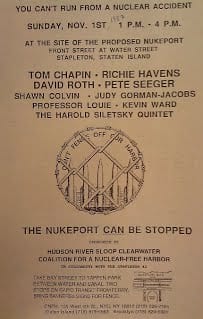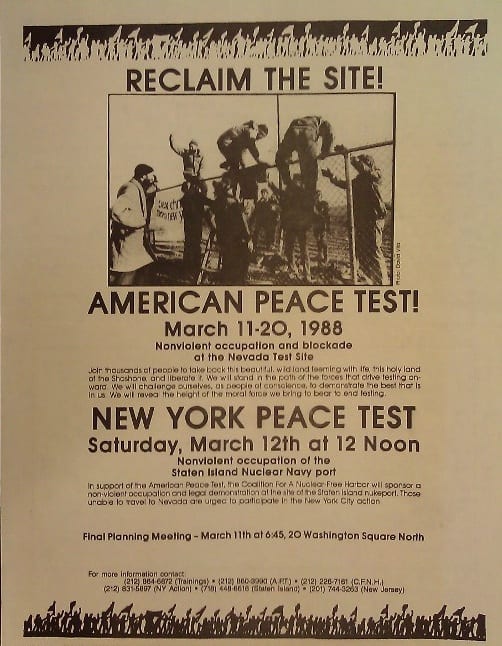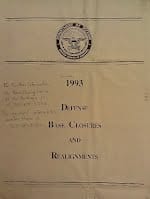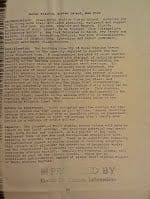During the 1980s and early 1990s, New York City experienced the Reagan administration’s military spending increase firsthand. In 1983, Stapleton, Staten Island was selected as the site for a new “nuclear homeport,” a Naval base for nuclear-capable ships. The USS Iowa was selected as the main battleship. Mayor Ed Koch and many Staten Islanders welcomed the homeport, thinking it would create jobs and revitalize their waterfront.
Groups like Coalition for a Nuclear Free Harbor formed to fight the port. The plan’s opponents were concerned that, in a densely populated city, an accident or attack involving the ship’s weapons could have devastating consequences. (DePalma, 1990). Their objections were backed by the City Council, which passed resolutions in 1983 declaring the City a Nuclear Weapons Free Zone and “Declaring that No Ship Be Permitted to Bring Nuclear Missiles into the Harbor of New York.”

Hand-drawn map of the navy site on Staten Island. Drawn by a member of the Coalition for a Nuclear Free Harbor. (Coalition for a Nuclear Free Harbor, The REPOhistory Archive, MSS 113, Box 12, Fales Library and Special Collections, New York University Libraries.)
After a judge blocked a referendum on the port from appearing on city ballots, organizers took more drastic steps. On July 14, 1987, a group of people was arrested for trespassing at the future homeport site, sparking a spate of other protest actions. A rally at the site sponsored by the Coalition for a Nuclear Free Harbor (CNFH) in November 1987 featured performances by Richie Havens, Tom Chapin, Pete Seeger, and others.

Flyer for the November 1987 rally at the future homeport site. (Coalition for a Nuclear Free Harbor, The REPOhistory Archive, MSS 113, Box 12, Fales Library and Special Collections, New York University Libraries.)
A joint occupation of a Nevada nuclear testing site and the New York nuclear navy port site was scheduled for March 12, 1988. There was a march in 1989 from Battery Park to 15th St, “tracing the potential radioactive plume of plutonium up Broadway.” CNFH organized a “human chain” on the Verrazano Bridge in June 1985. (Schmaltz, 1985); REPOhistory Archive).

Flyer for the “New York Peace Test,” March 12, 1988
(Coalition for a Nuclear Free Harbor, The REPOhistory Archive, MSS 113, Box 12, Fales Library and Special Collections, New York University Libraries.)
But all of these events could not stop the port from being built. On May 3, 1990, the port was dedicated. The Navy decided to “mothball” the Iowa and replace it with the Normandy in 1990. As of August 1990, the port was 90% complete, but Secretary of Defense Dick Cheney put it on the list of possible base closures. (Barron, 1990; DePalma, 1990; Lambert, 1991).
At the end of 1991, the Soviet Union had dissolved. The end of the Cold War meant that the Navy could no longer justify the cost of keeping so many bases open. On June 25, 1993, the Defense Base Closure and Realignment Commission voted to close the Staten Island Homeport and move its ships to Florida and Virginia. (Schmitt, 1993).


Department of Defense document giving the justification for closing the base. (Coalition for a Nuclear Free Harbor, The REPOhistory Archive, MSS 113, Box 12, Fales Library and Special Collections, New York University Libraries.)
Back to NYC Nuclear Archive Home
Next Page: The Campaign for a Nuclear Weapons Ban Treaty, 2000s-2010s
By Catherine Falzone, 2012. Adapted from Nuclear New York archive with permission.
